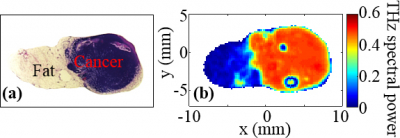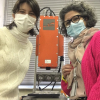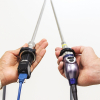
Engineering researchers at the University of Arkansas, USA, have moved closer to developing an alternative method of detecting and possibly treating breast cancer. The researchers, led by Magda El-Shenawee, professor of electrical engineering, work with pulsed, terahertz imaging. They adapted the technology to detect tumours and provide highly specific images of them.
Standard breast cancer imaging techniques do not always provide clear assessment of breast tissue on the margins of a tumour. Without an accurate picture of the margins between the tumour and healthy tissue, surgeons cannot be sure they have removed the entire tumour during a surgery. This shortcoming contributes to high rates—20 % to 40 %—of secondary surgery, either lumpectomy or mastectomy. Terahertz imaging could lead to fast, non-invasive and highly specific tumour margin assessment, which in turn could reduce the occurrence of second surgeries, cancer reoccurrence and metastasis.
Pulsed, terahertz spectroscopy produces high-quality images of the tissue, down to 80 µm. It scatters fewer waves than radiography, which enables deeper imaging into an object. Also, because terahertz radiation can transmit through most non-metallic materials, the systems can “see” through concealing barriers. For many years, El-Shenawee has focused on developing this detection system for health-care applications, while also investigating the unique electromagnetic signals emitted by breast cancer cells.
Their findings were published in the Journal of Biomedical Optics.










